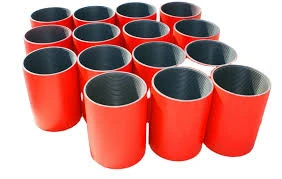- Afrikaans
- Albanian
- Amharic
- Arabic
- Armenian
- Azerbaijani
- Basque
- Belarusian
- Bengali
- Bosnian
- Bulgarian
- Catalan
- Cebuano
- Corsican
- Croatian
- Czech
- Danish
- Dutch
- English
- Esperanto
- Estonian
- Finnish
- French
- Frisian
- Galician
- Georgian
- German
- Greek
- Gujarati
- Haitian Creole
- hausa
- hawaiian
- Hebrew
- Hindi
- Miao
- Hungarian
- Icelandic
- igbo
- Indonesian
- irish
- Italian
- Japanese
- Javanese
- Kannada
- kazakh
- Khmer
- Rwandese
- Korean
- Kurdish
- Kyrgyz
- Lao
- Latin
- Latvian
- Lithuanian
- Luxembourgish
- Macedonian
- Malgashi
- Malay
- Malayalam
- Maltese
- Maori
- Marathi
- Mongolian
- Myanmar
- Nepali
- Norwegian
- Norwegian
- Occitan
- Pashto
- Persian
- Polish
- Portuguese
- Punjabi
- Romanian
- Russian
- Samoan
- Scottish Gaelic
- Serbian
- Sesotho
- Shona
- Sindhi
- Sinhala
- Slovak
- Slovenian
- Somali
- Spanish
- Sundanese
- Swahili
- Swedish
- Tagalog
- Tajik
- Tamil
- Tatar
- Telugu
- Thai
- Turkish
- Turkmen
- Ukrainian
- Urdu
- Uighur
- Uzbek
- Vietnamese
- Welsh
- Bantu
- Yiddish
- Yoruba
- Zulu
api 5ct casing coupling
Understanding API 5CT Casing Couplings An Essential Component in Oil and Gas Drilling
In the ever-evolving field of oil and gas drilling, the API 5CT standard plays a crucial role in ensuring that the tubular goods used in well construction are reliable and meet international quality standards. Among the components specified in this standard, casing couplings are vital for connecting segments of casing pipes. This article delves into the importance of API 5CT casing couplings, their specifications, types, and applications.
What is API 5CT?
API 5CT is a specification developed by the American Petroleum Institute (API) that governs the manufacturing and quality requirements for casing and tubing used in oil and natural gas drilling. It provides guidelines on the grades, dimensions, and mechanical properties necessary for the production of casing and tubing materials. The primary aim of this standard is to ensure safety, reliability, and consistency in well construction across various oil and gas projects.
The Role of Casing Couplings
Casing couplings are short pieces of pipe with threads at both ends, designed to connect two casing pipes. They serve several critical functions. First, they allow for the structural integrity of the entire casing string, ensuring it can withstand the pressures and forces encountered downhole. Second, they provide a sealing mechanism that prevents the migration of fluids, such as oil or water, which is essential for the success of drilling operations. The durability and design of casing couplings directly impact the overall efficiency and safety of drilling projects.
Specifications and Types of Casing Couplings
api 5ct casing coupling

Casing couplings come in various grades and types, as outlined in the API 5CT specification. The common grades include H40, J55, K55, N80, L80, C90, and P110, each designed to offer specific mechanical properties suited to different drilling environments. Casing couplings may also vary in size and thread type, including the common buttress and premium threads that provide superior sealing capabilities.
The coupling design is crucial for compatibility with casing pipes, ensuring that they can withstand the axial and torsional loads experienced during installation and operation. High-strength couplings are particularly important in deep-water and high-pressure applications, where the risks are significantly elevated.
Applications of API 5CT Casing Couplings
API 5CT casing couplings are widely used in various oil and gas exploration and production operations. They are essential for both onshore and offshore drilling projects, providing the necessary connection and sealing in the wellbore. The reliability of these couplings is paramount, as a failure can lead to catastrophic results, including blowouts or leaks, which can have severe environmental and economic consequences.
In addition to traditional oil and gas wells, API 5CT casing couplings are also used in geothermal energy extraction and water well drilling. Their robust design and adherence to international standards make them versatile and indispensable in any drilling operation.
Conclusion
In conclusion, API 5CT casing couplings are vital components in the oil and gas industry, ensuring safe and effective drilling practices. By adhering to the stringent guidelines set forth in the API 5CT specification, manufacturers can produce high-quality couplings that meet the demands of various drilling environments. As exploration and production technologies advance, the importance of reliable casing couplings will continue to grow, underscoring their critical role in the energy sector. Understanding the specifications, types, and applications of these couplings is essential for industry professionals tasked with maintaining the safety and efficiency of drilling operations.
-
Well Casing Extension Couplings – Applications and InstallationNewsJun.06,2025
-
Types of Crossover Subs in Drilling & CompletionNewsJun.06,2025
-
Key Features of High-Quality Tubing Pup JointsNewsJun.06,2025
-
Installation and Maintenance Tips for Steel Couplings for PipeNewsJun.06,2025
-
How to Select the Right Pup Joint for Oil & Gas OperationsNewsJun.06,2025
-
Applications of Stainless Steel Pipe CouplingsNewsJun.06,2025







